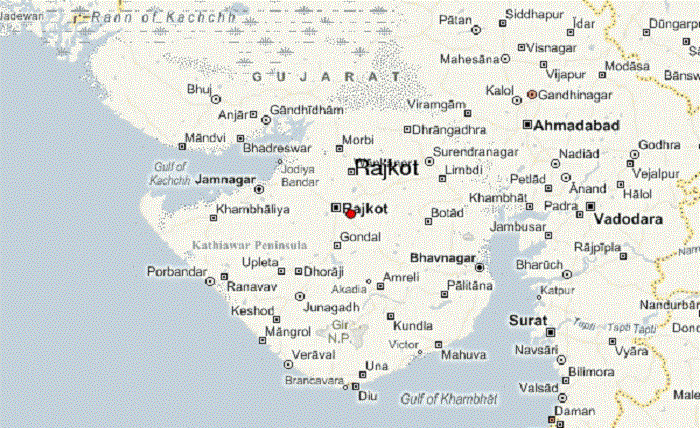Rajkot Temperature: A Comprehensive Guide to Climate, Trends, and Seasonal Changes

The Rajkot temperature plays a significant role in defining the lifestyle, culture, and activities of this vibrant city in Gujarat, India. Known for its semi-arid climate, Rajkot experiences distinct seasonal changes throughout the year, with varying levels of temperature and humidity. Understanding the Rajkot temperature trends can help residents, tourists, and businesses adapt to its unique weather conditions. This guide offers a detailed analysis of the Rajkot temperature to enhance your understanding and planning.
Seasonal Variations in Rajkot Temperature
The Rajkot temperature changes markedly across three primary seasons: summer, monsoon, and winter. During summer, which spans from March to June, temperatures often soar above 40°C, making it one of the hottest periods of the year. The monsoon season, from July to September, brings relief with moderate rainfall and slightly cooler temperatures. However, humidity levels rise significantly during this time. In winter, from November to February, the Rajkot temperature drops to a comfortable range of 10°C to 20°C, offering the most pleasant climate for outdoor activities.
Summer in Rajkot: Scorching Highs
Summer in Rajkot is characterized by extreme heat, with the Rajkot temperature peaking between 40°C and 44°C during May. The dry winds exacerbate the heat, making this season particularly challenging for outdoor activities. To beat the summer heat, locals and visitors often rely on air-conditioned spaces and traditional cooling methods like drinking buttermilk or sugarcane juice. The Rajkot temperature during summer underscores the importance of hydration and sun protection for those navigating the city’s bustling streets.
Monsoon in Rajkot: Relief with Rain
The monsoon season in Rajkot offers respite from the summer heat, as the Rajkot temperature drops to an average range of 25°C to 32°C. Accompanied by moderate to heavy rainfall, the city transforms into a lush green landscape during this period. However, the combination of rain and high humidity can be uncomfortable for some. The Rajkot temperature during monsoons highlights the need for waterproof gear and careful planning for outdoor activities, as sudden showers are common.
Winter in Rajkot: The Cool Comfort
Winter is the most favorable season to explore Rajkot, as the Rajkot temperature ranges between 10°C and 20°C. The cool and dry weather provides an ideal environment for enjoying the city’s cultural landmarks, parks, and local markets. The drop in Rajkot temperature during winter also encourages various outdoor events and festivals, attracting both locals and tourists. It’s a season that showcases Rajkot’s charm in the most comfortable weather conditions.
The Impact of Rajkot Temperature on Daily Life
The fluctuating Rajkot temperature significantly influences the daily life of its residents. During summers, activities are often scheduled during the early morning or late evening to avoid the scorching heat. The monsoon season impacts transportation and farming activities, as heavy rains can lead to waterlogging in certain areas. Winter, with its mild Rajkot temperature, is a time for social gatherings, weddings, and festivals. Understanding these variations is crucial for planning daily routines and long-term strategies in the city.
How Rajkot Temperature Affects Agriculture
The Rajkot temperature also plays a critical role in the region’s agriculture, which is a significant part of the local economy. High temperatures in summer can stress crops, necessitating efficient irrigation systems. The monsoon season brings much-needed rainfall, replenishing water reserves and aiding crop growth. Winter’s cooler Rajkot temperature supports the cultivation of crops like wheat and vegetables, making it a vital season for farmers. By understanding these patterns, agricultural strategies can be tailored to maximize productivity.
Tips for Coping with Rajkot Temperature
Adapting to the Rajkot temperature requires a blend of practical measures and lifestyle adjustments. During summer, wearing light cotton clothing, staying hydrated, and avoiding peak sun hours are essential. In the monsoon season, carrying an umbrella and wearing water-resistant footwear can help navigate the rainy weather. Winter’s cooler Rajkot temperature calls for warm clothing during mornings and evenings. By following these tips, residents and visitors can make the most of their time in Rajkot, regardless of the season.
Conclusion
The Rajkot temperature offers a fascinating glimpse into the city’s climatic patterns and their influence on daily life, agriculture, and tourism. Each season brings unique challenges and opportunities, from the scorching heat of summer to the refreshing rains of the monsoon and the pleasant chill of winter. By understanding the nuances of the Rajkot temperature, you can plan your activities, trips, and routines effectively, ensuring a comfortable and enjoyable experience in this vibrant city.
FAQs
1. What is the average Rajkot temperature during summer?
The average Rajkot temperature during summer ranges between 35°C and 44°C, with May being the hottest month.
2. How does Rajkot temperature change in the monsoon season?
During the monsoon, the Rajkot temperature drops to an average of 25°C to 32°C, accompanied by moderate to heavy rainfall.
3. When is the best time to visit Rajkot?
Winter, from November to February, is the best time to visit Rajkot as the Rajkot temperature ranges between 10°C and 20°C.
4. How does Rajkot temperature affect agriculture?
The Rajkot temperature influences crop cycles, with summer requiring irrigation, monsoons aiding growth, and winter supporting wheat cultivation.
5. What precautions should I take to cope with Rajkot temperature in summer?
To cope with the high Rajkot temperature in summer, wear light clothing, stay hydrated, and avoid outdoor activities during peak heat hours.




